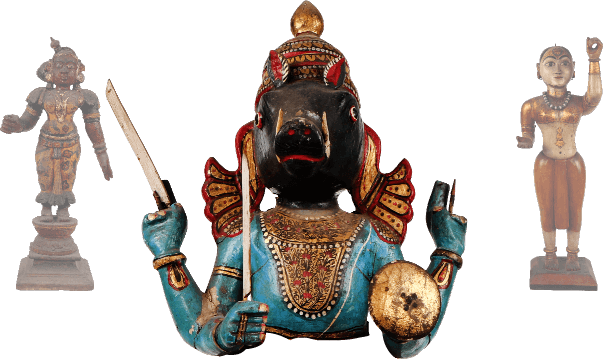Title : Abha (Lady's Kurta) : Satin silk Mirror embroidery
Accession No : 85/6867
Abha (Lady's Kurta) : Satin silk Mirror embroidery on maroon satin silk on front part and sleeves. Jari border separately attached to lower ends in round.
Source
- RepositoryNational Crafts Museum and Hastkala Academy
- CollectionMuseum Collection
Provenance
- CountryIndia
- StateGujarat
Condition
- ConditionDamaged
- Action NoteCNR
Dimensions
- Measurement (CMS)Courtly crafts
Significance
- ReligiousEmbroidery in Sindh, Gujarat, and Rajasthan often carries religious significance, with artisans incorporating Islamic calligraphy,or Hindu religious symbols. In Sindh, textiles serve an important role in ceremonies or festivals. In Gujarat, communities like Rabaris and Ahirs infuse religious symbolism into their embroidery, used in ceremonies and weddings. Rajasthan's diverse communities, including Rajputs and Jats, incorporate religious motifs in textiles for cultural and religious events. Embroidery in these regions serves as a meaningful expression of faith and cultural identity
- Socio economicThe most prolific region for embroidered textiles in the subcontinent lies along the border between India and Pakistan, encompassing Gujarat in India and Sindh in Pakistan. The neighboring areas of Rajasthan in India and Baluchistan in Pakistan also significantly contribute to the remarkably diverse embroidery traditions in this region. Primarily carried out by women from rural farming and herding communities, comprising both Hindu and Muslim populations, much of the embroidery is crafted for personal use. However, certain communities, such as the Mochis and the Meghwals, also undertake commissioned embroidery projects.
- ArtisticSaurashtra, Gujarat, hosts various embroidery types by farming communities like Kathis, Mahajans, Kanbi, Ahir, and Rabari. These communities are known for bold designs associated with weddings, homes, and livestock. Meanwhile, in Sindh, Pakistan, two major styles are Pakko (solid) and Kachho (raw or Soof), each showcasing distinct characteristics, including thick floral embroidery and stylized geometric forms with peacocks. Artisans in Sindh often depict day-to-day life, religious associations, and surrounding flora/fauna in their artworks. This embroidered costume is a ladies kurta featuring flower motif along with Sindhi Taropa stitch on the yoke border, complemented by mirror embroidery in the panel.
Description
- DescriptionAbha (Lady's Kurta) : Satin silk Mirror embroidery on maroon satin silk on front part and sleeves. Jari border separately attached to lower ends in round.
- Inscription/Markings No
- Reference Traditional embroideries of India. Shailaja D.Naik Indian Textile John Gillow Nicholas Barnard. Indian embroidery; Rosemary crill
- KeywordEmbroideries, sindhi taropa

